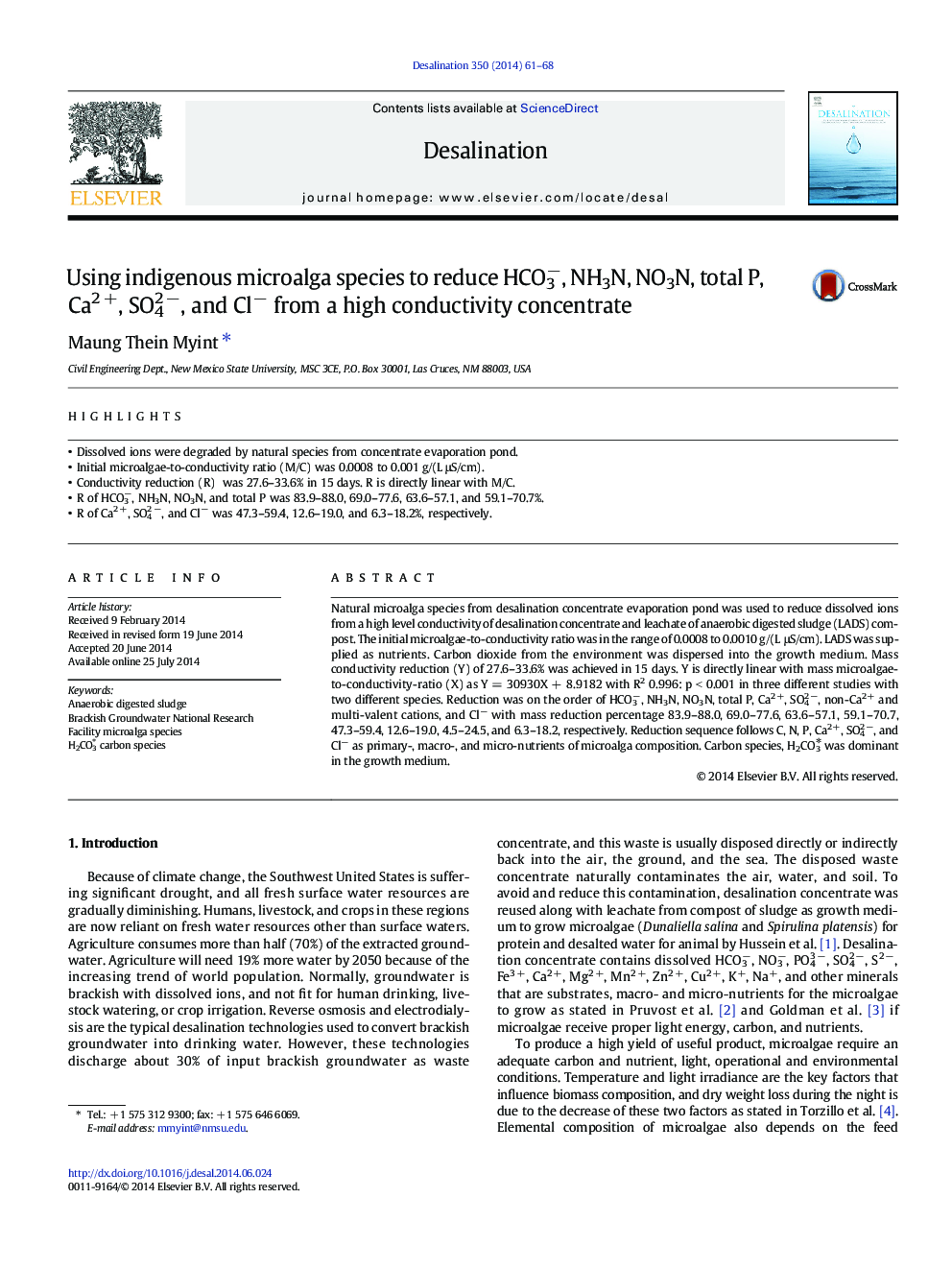| Article ID | Journal | Published Year | Pages | File Type |
|---|---|---|---|---|
| 623372 | Desalination | 2014 | 8 Pages |
•Dissolved ions were degraded by natural species from concentrate evaporation pond.•Initial microalgae-to-conductivity ratio (M/C) was 0.0008 to 0.001 g/(L μS/cm).•Conductivity reduction (R) was 27.6–33.6% in 15 days. R is directly linear with M/C.•R of HCO3−, NH3N, NO3N, and total P was 83.9–88.0, 69.0–77.6, 63.6–57.1, and 59.1–70.7%.•R of Ca2 +, SO42 −, and Cl− was 47.3–59.4, 12.6–19.0, and 6.3–18.2%, respectively.
Natural microalga species from desalination concentrate evaporation pond was used to reduce dissolved ions from a high level conductivity of desalination concentrate and leachate of anaerobic digested sludge (LADS) compost. The initial microalgae-to-conductivity ratio was in the range of 0.0008 to 0.0010 g/(L μS/cm). LADS was supplied as nutrients. Carbon dioxide from the environment was dispersed into the growth medium. Mass conductivity reduction (Y) of 27.6–33.6% was achieved in 15 days. Y is directly linear with mass microalgae-to-conductivity-ratio (X) as Y = 30930X + 8.9182 with R2 0.996: p < 0.001 in three different studies with two different species. Reduction was on the order of HCO3−, NH3N, NO3N, total P, Ca2 +, SO42 −, non-Ca2 + and multi-valent cations, and Cl− with mass reduction percentage 83.9–88.0, 69.0–77.6, 63.6–57.1, 59.1–70.7, 47.3–59.4, 12.6–19.0, 4.5–24.5, and 6.3–18.2, respectively. Reduction sequence follows C, N, P, Ca2 +, SO42 −, and Cl− as primary-, macro-, and micro-nutrients of microalga composition. Carbon species, H2CO3⁎ was dominant in the growth medium.
